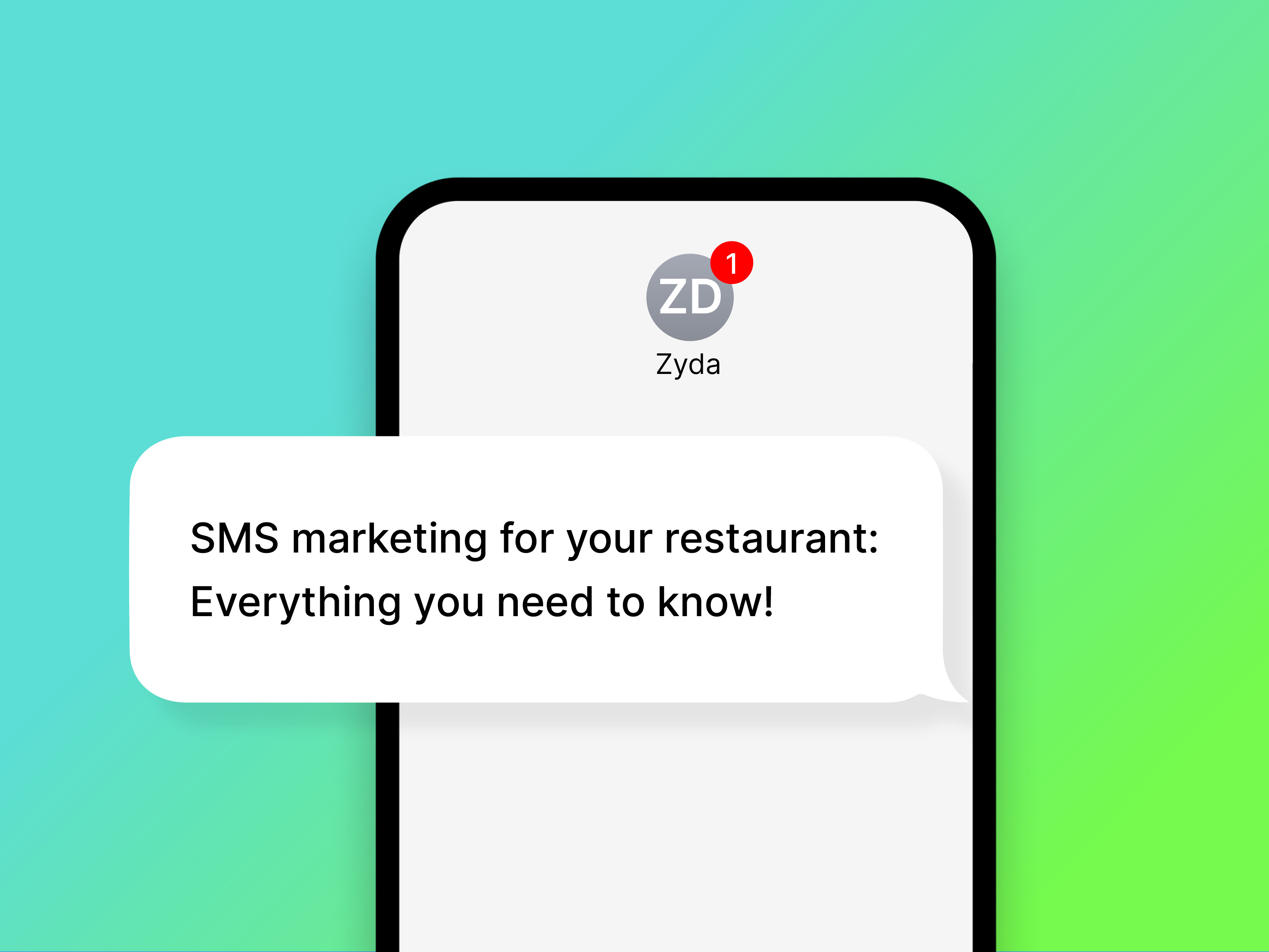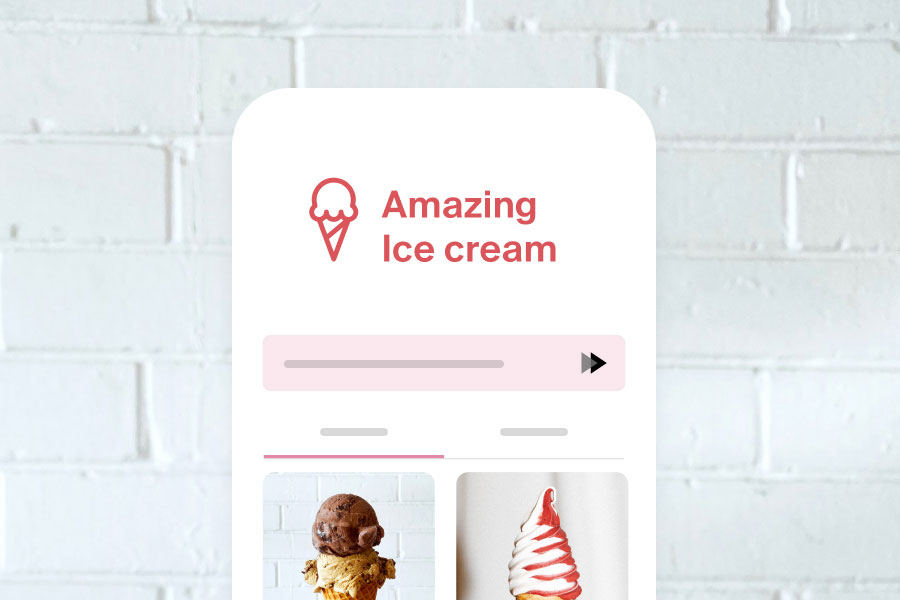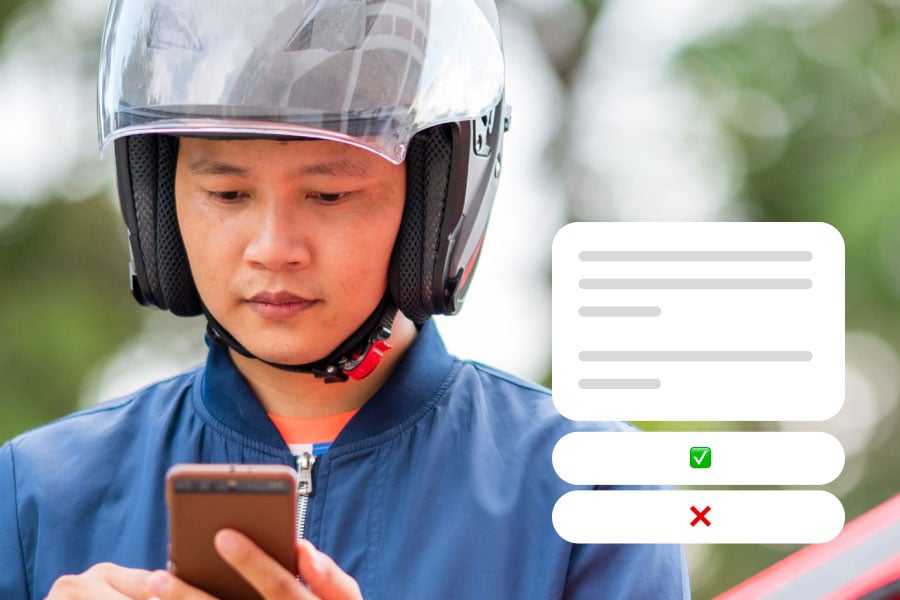Entrepreneurship
SMS marketing for your restaurant: Everything you want to know
By Enas El Masry

We all have this one friend who’s been around forever, come rain or shine. For many marketers, this one friend is SMS marketing.
In 1992, software developer Neil Papworth sent out the first-ever SMS, unknowingly blazing the trail for what is now the vibrant and ever-evolving communication medium: ‘texting.’ But it wasn’t until the introduction of the 5–6 digit shortcodes around 2003 in the US that SMS bloomed as a marketing channel.
One can easily understand that text message marketing was the bomb back in the day when SMS was the only channel for mobile phone texting. But since then, the competition has multiplied beyond count, and, today, there are as many texting apps as there are mobile phones.
Is SMS Marketing Still Relevant Today?
You may be surprised to discover that despite the competition, SMS marketing has stood its ground - nay, it has continued to crush the competition.
Surpassing many other communication channels, text marketing yields an astounding 90-98% open rate, 45% conversion rate, and 36% click-through rate. Seeing as how 91% of adults have reported always having their phones at arm’s length, it comes as no surprise that 90% of text messages are read within three minutes of being received.
And get a hold of this: SMS marketing garners an average ROI of 500%. Five. Hundred. Percent.
There’s a logical explanation for this massive success, and that’s how simple, affordable, and accessible SMS is.
Unlike other phone-based marketing strategies, SMS does not require unique apps, an internet connection, or even a smartphone. All you need is a phone with an active SIM card.
You could say the same about telemarketing; however, text message marketing is less invasive and disruptive. On average, 160 characters (the maximum length of an SMS text) take 12 seconds to read - probably the time it takes a telemarketing agent to say, “Hello, is this a good time to call?”
But to be fair, there is one crucial prerequisite for SMS marketing success, and that is a decent and thoroughly curated database of customers’ and potential customers’ phone numbers.
It’s All About That (Data)Base
When it comes to building a solid database of your customers, size matters, but so does quality. Much like social media followership - if it’s forced or bought, you will barely reap any fruits. Organic, consensual followership is the only way to enjoy the booming success of your SMS marketing campaign.
In some countries like the US, it is illegal to subscribe a user to a text marketing recipient list without them willingly opting in. And as free as the users are to opt in, they must also have an easy way to opt out - both usually achieved through a textable keyword.
Now that we’ve (hopefully) established the importance of users willingly being on board, let’s talk about the many sleek ways of getting their numbers.
1. The opt-in option: The way this works is that a user texts a particular keyword to your restaurant’s number, thereby agreeing to receive your text message marketing updates. In this case, you’ll want to put this keyword at every visual contact point with your customers and potential customers. This ranges from your print menu to your website, social media accounts, storefront, receipts, placemats, and cash register.
2. The contact number hunt option: This method relies on you gathering as many relevant contact numbers as possible to build a database of people who would be interested in your updates. The question is: where do you source these numbers? There are several scenarios that require your customers to share their numbers. This includes ordering food over the phone, receiving digital receipts, calling a restaurant to make a reservation, or creating an online account on your restaurant’s online ordering system.
Congratulations! You now have a database. But how much information do you have about each number? Is the customer young or old? Do they have any dietary preferences? Are they single, parents with children, or teenagers who eat out with their friends often?
To really round up your database, it is crucial that you gather as much data as possible about the customers you’ll be texting updates to. As with any form of communication, the more relatable your announcements are, the more likely the recipients are to engage with you.
Information can be gathered through multiple channels. The first one is your online ordering platform, where customers can create profiles for faster checkout. By creating their online store profiles, your customers will essentially share all the critical information you need to gather about them.
You can also use the good old classic method of observation and analysis. Purchase habits and patterns are an obvious giveaway for your customers’ personas and preferences, and that’s something you can build on.
Last but not least, you can simply text them a survey that asks them to choose which category of customers they identify with the most. In return for replying to your survey, they’ll enjoy a free sample of their chosen menu preference.
So, database: check. Database enrichment: double-check. Seem like you’re now ready to start using the text marketing service to promote your restaurant.
But what does a restaurant communicate over SMS?
Uses of Text Message Marketing for Restaurants
There are two main types of text messages that any F&B business would send out: promotional messages and transactional messages.
As the name suggests, promotional messages aim to acquire new customers while retaining old ones by bolstering their loyalty to your brand. These messages can communicate discounts, offers, promotions, or vouchers. They can also be used to announce a new menu or seasonal item. And in some cases, restaurants use text messaging to send their customers polls and surveys that they can answer in return for free meals or discounts.
Meanwhile, transactional messages are used to communicate request-related updates with the customer. Examples of transactional messages include delivery status updates, pickup alerts, reservation confirmations and reminders, or notifications for when a customer’s table is ready.
Sounds easy and simple so far? Good, because it should be. However, the above alone wouldn’t put your SMS marketing campaign in the hall of fame and success.
However, the good news is that the path leading to the flashing success of text marketing is paved with simple tips that we’ll walk you through below.
SMS Marketing Success Check-List
The beauty of text messaging stems from its straightforwardness, brevity, and general lack of complication. In fact, it’s both a blessing and a curse. While other marketing channels thrive on the endless creativity that goes into copy, design, photos, or video, SMS is all about your choice of 160 characters.
So how do you optimize your use of these 160 characters?
Successful SMS marketing is twofold: There’s writing the text messages, and there’s planning the campaign.
Tips for writing your text messages
1. Personalize your texts
Anyone’s personal phone number is, well, personal - and that’s exactly how your SMS content should be. This means that generic announcements are better off reserved for social media marketing or other channels of mass communication. Text message marketing, however, is where you can send specific updates to specific clusters of customers based on their interests and preferences (if you missed the part about how to further your knowledge of your customers, scroll up for more information). Imagine how off-putting it would be for a vegan customer to receive an update about your new burger menu. Right?
Another feature of personalization relies on customer-specific information such as birthdays and anniversaries. No matter what you offer them, sending your customers a ‘happy birthday’ SMS along with a discount or free item that’s valid throughout the day is sure to make anyone smile and feel seen.
2. Write clearly (and correctly)
Text messages are, by nature, very brief, which often poses a challenge to wrap up all that you need to communicate in 160 characters or less. On the personal texting front, we’ve seen how users have developed their own texting language (such as BRR, LMAO, or GTG) to save precious character count. As a restaurant owner, though, it may come off as unprofessional to fall back on such texting acronyms. In this case, your marketing creativity shines through your ability to write clearly and concisely. While you’re at it, make sure you proofread all of your messages before sending them off on their way to your customers. Nothing says sloppy like spelling and grammar mistakes.
3. Add value
How excited would you be if you received your own restaurant’s text marketing messages? If your answer is anywhere near indifference or irritation, you want to rethink your content design. Be the fun uncle who always has gifts for everyone. Try to always weave in an offer, a discount, or a voucher code. Better yet, make these gifts exclusive to your SMS service (for example, a voucher code you can only redeem by showing it to the restaurant staff on your phone). This way, your customers will be incentivized to stick around and not opt out of your SMS marketing service.
4. Wrap up with CTA
Your text marketing campaign can only reach desired success if the customers act upon it. That’s why you need to guide them to the exact action you need them to take. Do you want customers to visit your online store? Do you want them to buy a specific item? Or maybe use a certain voucher code? Whatever it is, always include a clear call-to-action at the end of your message.
Tips for planning the campaign
1. Pick the right time
Offer your customers what they need before they even know they need it. For example, are you offering a free coffee on every two bagels? Sounds like a great offer to communicate in the morning. This way, your customers can either pass by on their way to work or order it the minute they arrive. Meanwhile, a combo meal value offer is best communicated around lunchtime when your customers may be overwhelmed with lunch options.
2. Plan ahead
Whether your text marketing campaign is standalone or part of a bigger, comprehensive marketing plan, you must always plan your strategy, content, and campaign KPIs ahead of launching. This spans everything from the key message you want to communicate to the texting schedule and frequency. Having your entire texting calendar before you is the best way to zoom out and evaluate the flow and design of your text message campaign.
3. Schedule your text messages
With your text message marketing campaign all set and ready to go, the best step to take next is to schedule your SMS messages. Thanks to text messaging services (such as the SMS marketing feature that Zyda offers its clients), you can now schedule text messages the same way you schedule social media posts. This way, you’ll never be late to send out messages, and the task will only be carried out once per campaign. Oh, the joy of checking tasks off your to-do list!
4. Text in bulk
We’ve already established that SMS marketing works best when it’s personalized. So, if one does not simply send to all, what should you do? The same thing you do with mailing lists: you group users according to preferences and interests. Even when your campaign has a thing or two for everyone, it’s best to create different variations of the text message that would appeal to the different customer groups you cater to. Match each message with its appropriate target group and send your messages in bulk.
5. Use a text messaging service
No matter how small your business is, it is impossible to text your customers the same way you text your friends - one by one from a personal number. Text messaging services offer an array of features that are mandatory for your restaurant’s text message marketing success. Not only can you filter and categorize your database, but you can also schedule messages, monitor the campaign’s performance, and even enjoy lengthier text character limits.
6. Make sure your website is mobile-friendly
You may have the best offers in town, but your customers are either too busy to pass by your store to make use of your amazing discounts. This is where the marriage of a phone-friendly online ordering platform to SMS marketing bears the tastiest fruits. Capture the customers’ enthusiasm and redirect them to your online store so they can seamlessly place their orders and enjoy your offers.
Text message marketing for restaurants can be a vibrant communication channel if you master it and build on its strengths. So, put on your creative hat and let the magic shine through.
Contact Zyda today and discover how our solutions can help you stand out and succeed in the competitive online food market.




